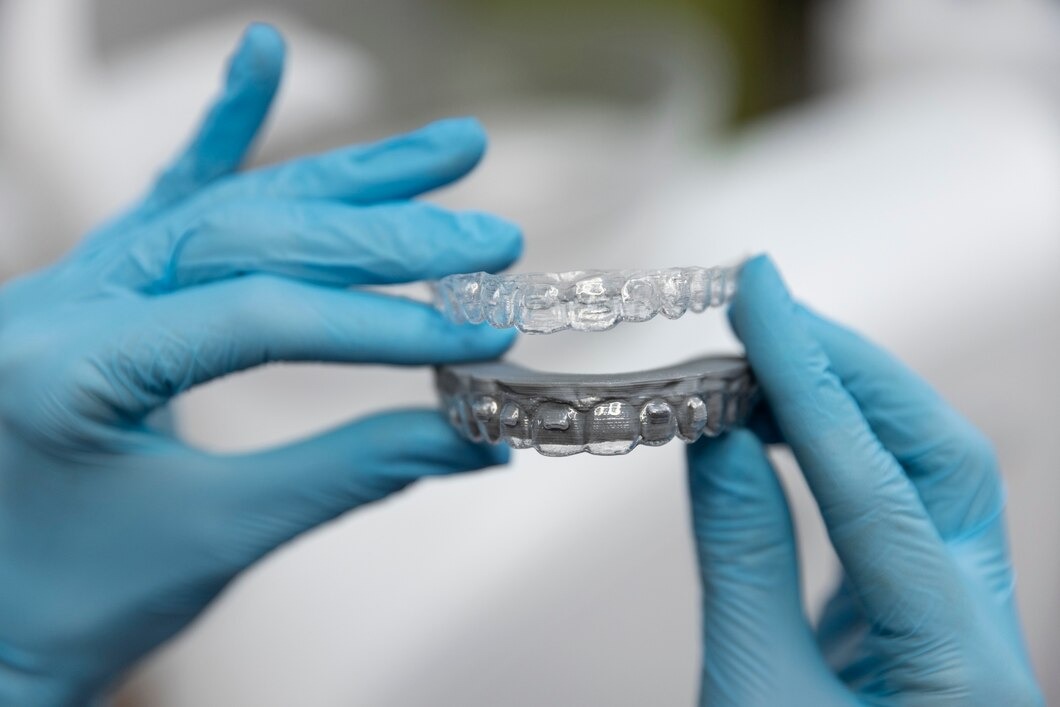If you want to straighten your teeth but do not want traditional braces, you are probably wondering whether or not Invisalign is right for you. After all, it is clear, removable, and more comfortable than metal. But one important question remains: does Invisalign treat all types of orthodontic issues?
The short answer is that Invisalign can fix many common alignment and bite issues, but it may not be appropriate for all cases. Whether you have mild spacing or more complicated bite misalignment, Invisalign in Calgary begins with understanding what it can (and can’t) treat.
What Does Invisalign Treatment Do?
Invisalign utilizes a series of clear plastic aligners that help to gradually move your teeth into the position you desire. Each aligner is custom-made using a ‘digital scan’ of your teeth and worn for approximately two weeks before switching to the next aligner.
Invisalign can fix the following:
- Crowded teeth.
- Spacing between teeth.
- Overbite and underbite.
- Crossbite.
- Open bite.
- Mild to moderate misalignment.
Invisalign works best for mild to moderate cases, but for some advanced cases, with a well-thought-out plan and attachments, you may even successfully treat some more complicated cases. Again, in contrast to traditional braces, you do not use metal brackets or wires, only smooth, BPA-free plastic aligners.
Who Is a Good Candidate for Invisalign?
Invisalign is appropriate for both teens and adults, provided they have full permanent teeth and healthy gums. Good candidates should:
- Follow instructions (wearing aligners for 20–22 hours a day)
- No need for major jaw correction or surgery
- Have mild to moderate bite/alignment issues
- Prefer a discreet, comfortable course of treatment.
After analyzing your teeth, a dentist clinic near you can help you see if you are a candidate for Invisalign or if traditional braces may be the appropriate option.
What Is the Basic Invisalign Treatment?
The basic Invisalign treatment starts with a digital scan of your mouth. From there, a custom treatment plan is created, showing how your teeth will move week by week.
Invisalign treatment steps:
- Initial consultation and digital scan
- Custom aligners made using 3D mapping
- Wearing aligners daily (20–22 hours/day)
- Switching aligners every 1–2 weeks
- Routine dental check-ups every 6–8 weeks
- Final retainer to keep teeth in place
This clear aligner system is more flexible and lifestyle-friendly than traditional braces, especially for people who play sports, give presentations, or want minimal impact on their appearance.
What Orthodontic Issues May Need Braces Instead?
Invisalign has come a long way, but there are still some orthodontic issues it may not be able to treat effectively:
- Severe rotation or tilting of a tooth
- Extreme crowding
- Major misalignment of the jaws
- Surgical orthodontics cases
- Teeth that need vertical movement (up or down)
In these scenarios, the orthodontist may want to treat you with traditional braces or hybrid treatment (one or two braces, depending on the case, plus Invisalign) to get a better orthodontic result. Your dentist or orthodontist can walk you through which option is best for your smile and goals.
What to Expect from Your Invisalign Journey
Every patient’s Invisalign journey is different. Some complete treatment in as little as six months, while others may need 18 months or more. Compliance is key; wearing your aligners as directed is what moves your teeth effectively.
After treatment, most patients wear a retainer to maintain their results. This step is important because teeth naturally try to shift back without retention.
Find Out If Invisalign Is Right for You – Book a Consultation!
Ready to find out if Invisalign is the right choice for your smile? Book a consultation with the experienced team at Totally Dental and start your journey to straighter teeth discreetly and confidently.
FAQs
Can I use Invisalign for 1 or 2 Teeth?
Yes, Invisalign can treat minor cases of one crooked tooth, particularly in cosmetic changes.
Does Invisalign move teeth faster than braces?
In mild cases, yes. Of course, it depends on the issue, but Invisalign has a slight advantage in moving teeth faster due to its digital planning.
Will I sound different with Invisalign?
You may have a slight lisp when you first receive your trays for the first few days, but typically with use the person adapts and speaks normally with the aligners.
Can I use Invisalign if I usually grind my teeth at night?
Yes, and actually the trays can offer some protection – but tell your dentist about your grinding, because sometimes severe grinding can wear out the trays.
Do I need cleanings while using Invisalign?
Of course. While I am not your dentist, it is likely more important to keep your teeth clean during the duration of your aligners to avoid plaque and cavities accumulating.

